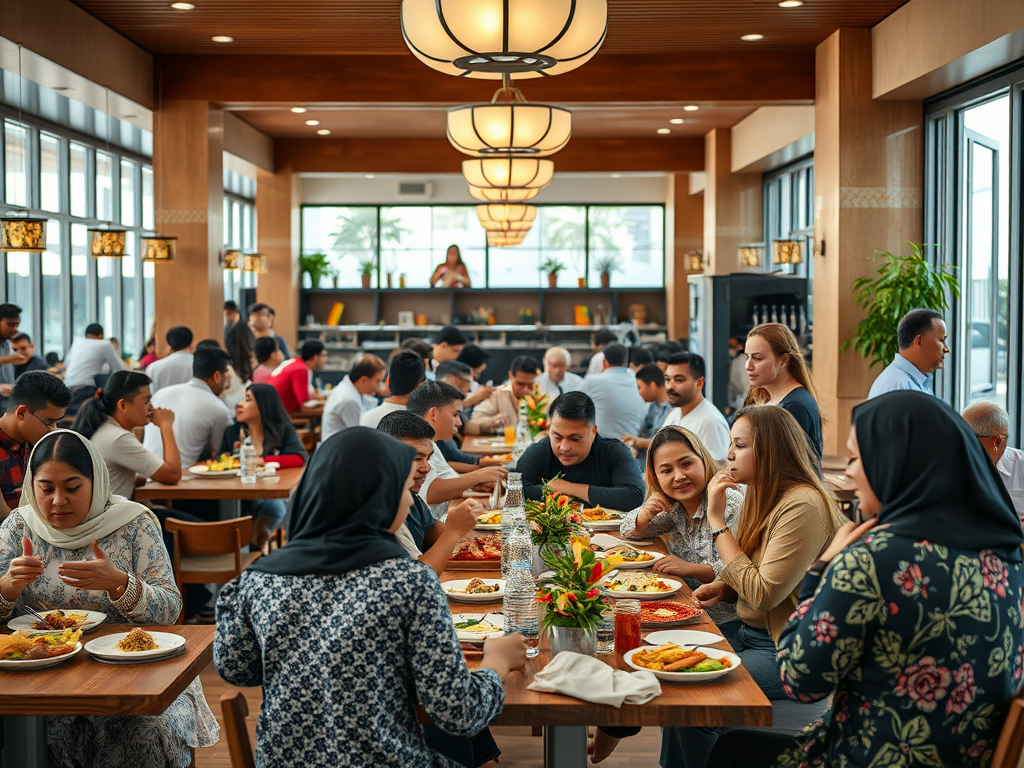Opening a cafeteria in the bustling metropolis of Dubai presents a thrilling opportunity for aspiring entrepreneurs. As a global hub of culture, commerce, and tourism, Dubai boasts a diverse culinary landscape that attracts both locals and tourists year-round. The city’s vibrant food scene, characterized by a mix of traditional cuisine and international flavors, makes it an ideal market for innovative dining experiences.
However, before launching your venture, understanding how much cost for a cafeteria license in Dubai is essential. Licensing costs vary based on factors such as location, business structure, and regulatory requirements. Proper planning, market research, and compliance with Dubai’s food and safety regulations are key to ensuring a smooth setup process.
By 2025, with continuous growth projected in the food and beverage sector, strategic planning and a thorough grasp of licensing procedures will be crucial to securing success in Dubai’s competitive dining industry.
Before diving into the nitty-gritty of starting a cafeteria, it’s essential to understand the prerequisite financial investments. The cost for a cafeteria license in Dubai generally ranges from AED 10,000 to AED 15,000, depending on various factors including size and location of your establishment. In addition, be prepared for other initial expenses that could elevate your startup budget. By armoring yourself with knowledge about the financial aspects and regulatory environment from the outset, you maximize your chances of launching a successful business. Dubai’s government has made efforts to cater to foreign investors and entrepreneurs; thus, understanding local regulations can be a competitive advantage.
Understanding the Market

The first step towards opening a successful cafeteria is comprehending the dynamics of the local market. Consumers in Dubai have diverse tastes ranging from traditional Middle Eastern dishes to contemporary international fare. It’s also worth noting that the target clientele includes not just locals but expatriates and tourists exploring the city. Familiarizing yourself with current consumer preferences is paramount. Trends show a growing inclination towards healthy eating options, sustainability, and ethical sourcing.
- Healthy food choices are on the rise, particularly organic and plant-based diets.
- Cafés that offer customizable meal options cater to diverse dietary needs.
- Experiential dining where ambiance complements the culinary experience is gaining traction.
Legal and Regulatory Requirements

Launching a cafeteria in Dubai entails compliance with regulations that ensure food safety and service quality. These regulations are strictly enforced, which… sets Dubai apart as a safe destination for dining. To legally operate your cafeteria, you will need to secure several licenses and permits. Apart from the Food Establishment License and Trade License, health and safety permits cannot be overlooked. Here’s a table summarizing the key licenses required along with their estimated costs:
| License | Estimated Cost (AED) |
|---|---|
| Food Establishment License | 10,000 – 15,000 |
| Trade License | 5,000 – 10,000 |
| Health and Safety Permits | 1,000 – 3,000 |
Understanding these regulatory aspects will save you from potential legal pitfalls and can streamline your approach towards opening day.
Choosing a Business Model
The business model you select will largely dictate your cafeteria’s identity and operational approach. Different models have distinct target audiences and ingredients on the menu. Here are a few popular models you might consider:
- Café-style setups focusing on coffee and pastries.
- Fast-casual cafeterias with a quick service concept.
- Cafeterias emphasizing local and traditional dishes.
Location Selection
A strategic location is fundamental to establishing your cafeteria’s success. Prime spots in Dubai often come with a higher rent, but they also attract more foot traffic. Consideration of visibility, accessibility, and proximity to urban hubs can vastly influence performance. High-traffic areas, such as shopping malls or business districts, bring additional opportunities for profitability.
Here is a brief overview of some of the most sought-after neighborhoods for cafeteria setups:
- Dubai Marina – known for its high-end shopping and vibrant atmosphere.
- Downtown Dubai – home to iconic landmarks like Burj Khalifa and the Dubai Mall.
- Business Bay – a fast-growing area with numerous office buildings.
Menu Development
Creating a well-rounded menu is crucial for engaging your audience. Given Dubai’s rich multicultural fabric, offering a blend of local and international cuisine can appeal to many. Balancing variety with seasonality will keep your offerings fresh and exciting. Furthermore, consider pricing your dishes competitively to attract a steady stream of clientele.
Designing Your Cafeteria
The design of a cafeteria plays a significant role in customer experience. An inviting atmosphere encourages longer visits and return patronage. Aim for a blend of comfort, aesthetics, and functionality when designing your space. Ambiance is crucial; integrating elements like lighting, colors, and layout can create a unique dining experience that resonates with the eclectic vibe of Dubai.
Here are some current interior design trends that could inspire your cafeteria design:
- Open-space concepts that promote social interactions.
- Natural elements like plants and wood that bring warmth.
- Use of technology to enhance customer experience, such as touchless payment systems.
Marketing Strategies
Effective marketing strategies are vital to attracting customers to your new cafeteria. Given the competitive nature of Dubai’s food industry, fresh and creative approaches will set you apart. Utilize social media platforms to create buzz around your opening and continuously engage with your audience. Collaborating with food influencers can also provide credibility and help generate awareness. Explore partnerships with local businesses for promotions could boost your visibility and customer traffic.
Staff Recruitment and Training
Hiring the right staff is pivotal to your cafeteria’s operational success. Create a positive work environment and invest in adequate training. Staff should embody your brand’s values and ensure that service quality remains consistent. A well-trained team can significantly enhance customer satisfaction and build loyalty, making training an essential part of your overall business model.
Financial Planning and Budgeting
A sound financial plan supports every successful cafeteria. You’ll need to analyze your start-up and operational costs, from equipment purchases to staff salaries. Maintaining a detailed budget will help you manage expenses efficiently and prepare for any unexpected costs. Establishing revenue projections will give you an insight into your break-even point and profitability timelines which are paramount for sustainability.
Conclusion
Starting a cafeteria in Dubai in 2025 is an undertaking that blends creativity, entrepreneurship, and strategic planning. Through understanding market demands, navigating regulatory requirements, selecting the right location, developing an enticing menu, and applying effective marketing strategies, your journey can transform from a dream to a successful reality. With the right mindset and preparation, you can seamlessly integrate into Dubai’s dynamic food culture, capturing the hearts and appetites of a diverse clientele looking for their next great meal.
Frequently Asked Questions
- What type of cafeteria is most popular in Dubai? Cafeterias that offer a mix of international cuisines tend to attract a diverse crowd.
- How much capital do I need to start a cafeteria in Dubai? Initial investments can vary greatly but generally range from AED 200,000 to AED 1 million, depending on your concept and location.
- What are the most important licenses required? The main licenses are the Food Establishment License and the Trade License, in addition to health and safety permits.
- Is it necessary to hire a consultant? While not mandatory, hiring a local business consultant can be beneficial for navigating regulations and market entry.
- What are the best marketing strategies for a new cafeteria? Social media marketing, local SEO, and collaborations with food influencers can be effective strategies.



